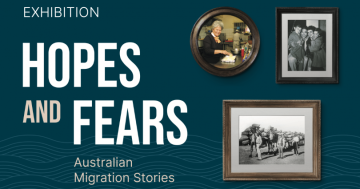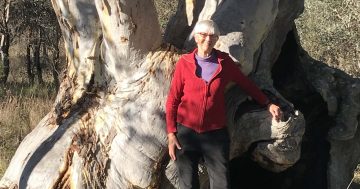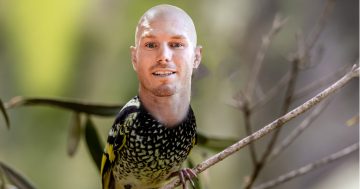
Swift parrots are stunning little birds. Sadly, they’re also in very serious trouble. Photo: Ian Fraser.
A couple of the highlights of this autumn in Canberra will have passed most people by, quite understandably.
Two parrots, very different in looks and lifestyle, have been surprisingly present in suburbia throughout most of May, and as I write this, they are still around.
What they have in common is unfortunate – they are both listed as being in danger of extinction in the wild, although to different degrees.
In April, there were reports of an unusual number of swift parrots in Callum Brae Nature Reserve, off Narrabundah Lane in Symonston.
This exquisite little parrot is listed as critically endangered, under federal, NSW and ACT legislation. It is estimated there could be as few as 300 breeding adults remaining in Australia, down from an already precarious 2000 or so 20 years ago.
Like most threatened species in our part of the world, they rely on woodlands and the associated grasslands, both of which are themselves critically endangered habitats. Swathes of magnificent old trees growing over a native grassy understorey once swept west of the Great Dividing Range from southeast Queensland to South Australia.
It is estimated that less than five per cent of that richness is left. Because it grew on deep fertile soils, graziers and farmers changed the land to suit crops and stock.
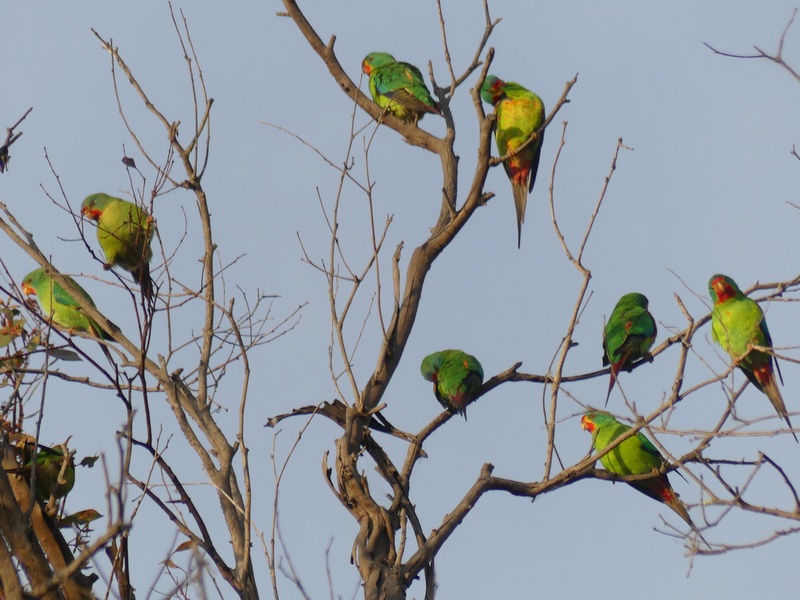
Part of a flock of swift parrots which visited Callum Brae Nature Reserve in May. Photo: Ian Fraser.
The ACT has played an important role in protecting the tiny remnants. Indeed, as horrifying as it sounds, the Mulligans Flat and Goorooyaroo Nature Reserve complex in the north of the Territory, at 1600 hectares, is the largest woodland reserve in Australia (and thus the world). Other such reserves, including Callum Brae, are scattered across Canberra.
The swift parrot has another serious problem on top of the loss of woodlands. Remarkably, it breeds in the wet blue gum forests of southeast Tasmania, and every autumn the entire population flies across the perilous Bass Strait.
But, shockingly, these forests are being cut down at an alarming rate, mostly on private land where protection is absent.
But wait, there’s more – and of course it’s not good news.
In the 1830s, someone misguidedly thought Tasmania would benefit from the introduction of sugar gliders from the mainland. You might think that was unlikely to cause problems, but when we start tinkering with nature we don’t know what threads might start to unravel.
In the past few years, it has been discovered that in Tasmania the gliders have adopted a behaviour unrecorded on the mainland. They have been entering swift parrot breeding hollows and eating eggs, chicks and even brooding females at a very significant level. Only swift parrots breeding on offshore islands, especially the rugged Bruny Island off the state’s southeast tip, are safe – as long as the blue gums are protected there.
Many people are working hard to save the ‘swifties’ (as they are known to their friends) but it doesn’t look good
At least until this autumn offered some hope.
If there are really only 300 left, then the 60 to 80 which hung around Callum Brae Nature Reserve for a couple of weeks, before moving to Kambah, represented a remarkably high proportion of the overall population.
Moreover, there were quite a few youngsters with them, which bodes well.
Watch out for small rocket-like bright green parrots with red under their wings and a long, slim, dark red tail. The great 19th century ornithologist John Gould described small flocks of them flying over Hobart as ‘chasing each other with the quickness of thought’, hence the name.
All we can do is enjoy them, keep our fingers crossed and protect every woodland patch and mature paddock tree.
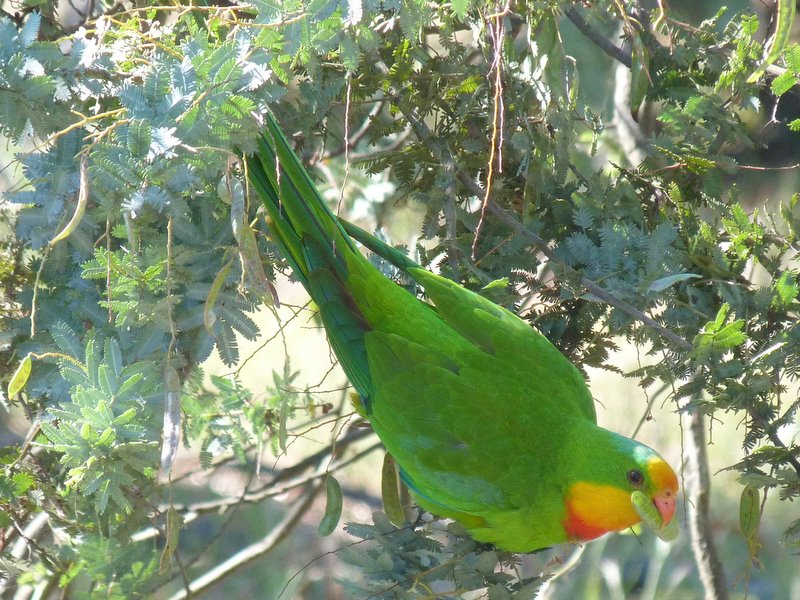
Male superb parrot eating wattle pods at Mulligans Flat. Photo: Ian Fraser.
Speaking of Kambah, the swifties there were first noticed by people enjoying a flock of superb parrots, a stunning bird – big and bright green with a yellow and red face – which is declared vulnerable to extinction.
In winter, it can be found on the NSW northwest slopes, and in summer it breeds in woodlands to the north of Canberra. Increasingly, superb parrots have come into the ACT’s northern suburbs, pushed initially by drought, and are now a relatively common sight and sound, especially in the Belconnen-Gungahlin area.
The influx into Kambah during the past week or so is unexpected though, both because it suggests they are expanding throughout Canberra, but also because we would expect them to have flown north by now.
There is so much we don’t understand, but of course that’s part of the joy of nature – although not quite so much when we’re trying to manage and protect a threatened species.
Keep looking up and listen for their hoarsely melodious call which is unlike that of any other local parrot.
Have you seen any swift and superb parrots this autumn?
Ian Fraser is a Canberra naturalist, conservationist and author. He has written on all aspects of natural history, advised the ACT Government on biodiversity and published multiple guides to the region’s flora and fauna.











